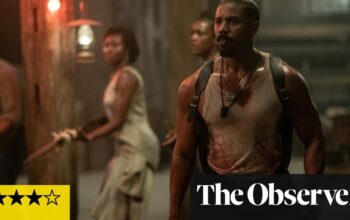Did you feel intimidated or overwhelmed when collaborating with iconic figures like Martin Scorsese, Leonardo DiCaprio, and Robert De Niro?
I was not sure if I was affected, but I definitely felt overwhelmed initially. When playing a major character like Molly, you have to adapt quickly. However, my hands were trembling on the first day with Leo and also with Robert.
Did you do anything to break the ice with DiCaprio, who played your husband on-screen?
He asked me to come over for dinner. We sat outside at his place with a fire and talked. He took out a pack of cigarettes, but I didn’t have mine. So I asked if I could have one. We ended up sharing a few cigarettes by the fire and getting to know each other, which really helped break the awkwardness. Then he said, “This feels good. We should incorporate this into the film somehow. I think Ernest and Molly should smoke together.” I agreed and mentioned that many women used to smoke pipes back then. It’s funny because we have both quit since then.
The lead character holds a significant role in the movie, and I desired to see her more, but the focus remains on the male characters. Is this a reflection of the movie industry’s norms?
Many people share the belief that there should be a greater representation of Native perspectives and characters in film. It is commendable that there has been a push for this. The director, Marty, recognized that it was not his role to tell these stories. While there is a demand for more Native stories, it is crucial that they are told by indigenous film-makers. However, this does not diminish the value of films like this in raising awareness among wider audiences about these stories and characters.

Did playing the character Molly, who experiences a lot of suffering, grief, and illness, feel difficult?
Occasionally, I felt the need to have some alone time in my trailer. However, there was a significant Native presence on the set – among the cast, crew, and extras. When a large group of Natives gather, it’s always filled with laughter. This helped me maintain a sense of self and escape from the intense story for a while.
I imagine receiving this recognition is a positive experience, but it may also bring up distressing recollections for Native Americans. Does this create a conflicting sentiment?
Our method of handling it involves celebration and using humor to counteract it – these two have always been intertwined for me. This is something that is often noticed in our storytelling style. For example, in Sterling Harjo’s show, Reservation Dogs, viewers often comment on how one episode can make them both cry and laugh. Instead of contradicting each other, it feels more like finding a balance.
Source: theguardian.com


